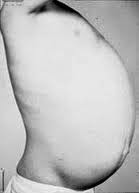Acute Pain - Nursing Care Plan for Glaucoma

Nursing Diagnosis : Acute Pain r / t Increase in intraocular pressure (IOP) Definition Glaucoma is a group of eye disorders characterized by increased intraocular pressure. (Long Barbara, 1996) Glaucoma often occurs in both eyes, but extra fluid pressure first begins to build up in one eye. If you don't seek treatment for glaucoma and can't control it, your peripheral vision will decrease by time and subsequent eye damage may easily lead to blindness. Etiology There are different types of glaucoma. Most occur when pressure in the eye (intraocular) increases, damaging the optic nerve but sometimes optic nerve damage can occur even when intraocular pressure is normal. Other types of glaucoma are rare and are caused by abnormal eye development, drugs, eye infections or inflammatory conditions, interruption of blood supply to the eye, systemic diseases and trauma. Symptoms: Headaches. Sensitivity to light. Blurred vision. Decreased peripheral vision- gradual loss. Nausea and vomit...
